In this weeks’ workshop we have started to learn how to optimize our Twitter-accounts and through this, also other social media platforms. I chose to create a new twitter account rather than using my old one, since i would prefer to separate my private account and my “professional” account.
The first step was mainly to try out different strategies to find followers of your interest. In turn, these might be potential followers to you in the future. After this we were to try out different tools to organize our Twitter timeline and also to organize our own Twitter activity.
I started by simply searching for journalists and organisations by name on Twitter, of those I already knew about.
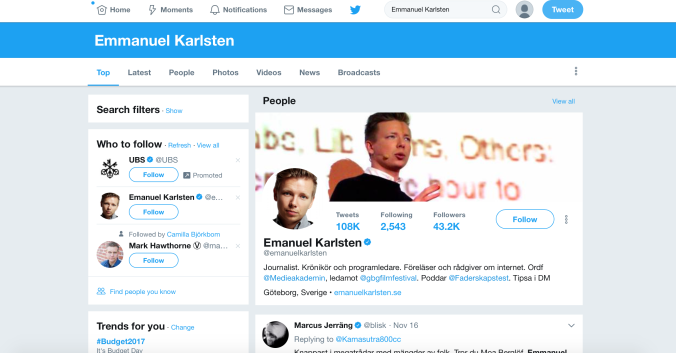
The most basic way of finding people to follow on Twitter, is simply by searching for them by name.
Next, I used a third party tool to find further potential people to follow. I did this by using Tweepi. Tweepi has a lot of different features, some of which you need to pay for. However, I chose to use its free services which allows you to find and follow other people’s followers.
I could see why this could be an effective way of finding people that might be of interest, either for you personally, or as potential followers in the future. However, I think you should be very careful to carelessly start following random people, as it might have the opposite effect of what you want. That is why I did not chose to follow all the 5000 of the Swedish communicator Fredrik Wass’s followers that was recommended to me by Tweepi. However, there might be someone that captures your interest, and that you might not have found otherwise that you can follow.
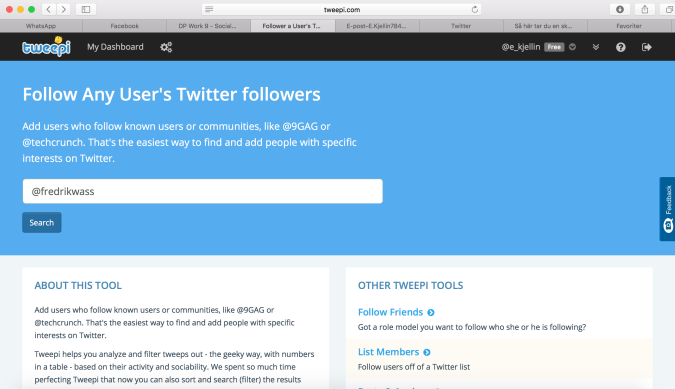
On Tweepi you can name the person whose followers you might find interesting. This is a good way of finding an audience who might be interested in what you are writing about.
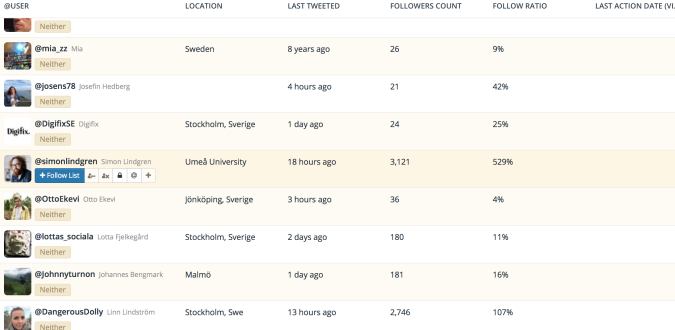
Even if you might not follow every one on this list, there might be someone that captures your interest and that you might not have found otherwise.
Next, I wanted to find lists on Twitter to subscribe to. Lists are curated groups of Twitter accounts. I followed my tutor’s advice to visit Nina Diamond’s profile, a journalist who has created several lists. I also visited Sweden’s previous minister of foreign affairs to see what kinds of lists he had subscribed to. I eventually found a few that interested me.

Finding lists that cover a specific subject or area is a great way of getting a variation of different perspectives.
At this time my timeline needed to get organized and I researched two Twitter tools to help me with this: TweetDeck and Crowdfire.
TweetDeck allowed me to organize the content of my timeline in to different columns. For instance; I wanted to start a column that gathered tweets about my employer back home. I also wanted to see what people were writing, about an initiative for increasing democratic engagement for younger kids in my hometown in Sweden.
Theres is no question TweetDeck will make you even more up to date, as it will organize your timeline more effectively. Instead of missing out on tweets about politics, that are mixed with tweets about the best Christmas hot chocolate recipe, you can now gather it in category-specific columns of your own choice. It is also possible to tweet directly from the page, in real time or scheduled, which I also tried out.
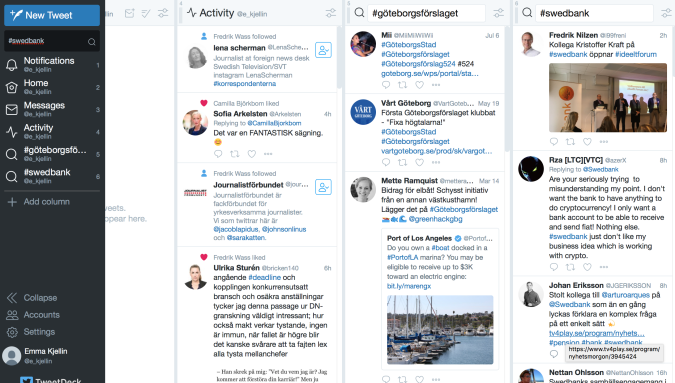
TweetDeck helps you to organize your timeline. You can create your own columns that collects tweets with a specific topic or hashtag.
Crowdfire would be a great tool to use if I was more active on social media and wanted to post things more effectively and timely on several different platforms. I can’t help of feeling a bit sad however, to realize that Crowdfire also actively suggest articles for you to share. This leaves very little for the user to research her- or himself. I wonder, where does the authenticity go, if nothing that you post comes from your own initiative, but rather from a robot?
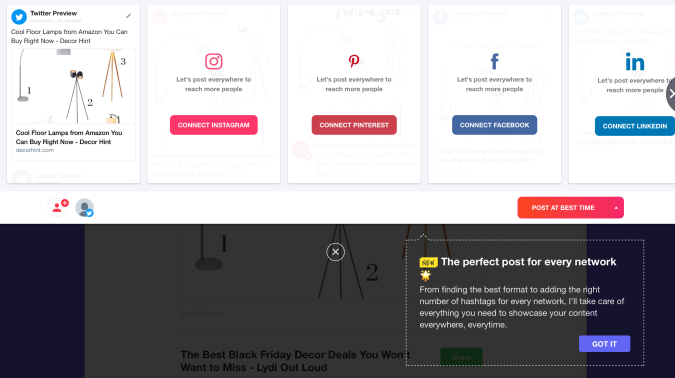
Crowfire helps you to distribute your material on to several different platforms.
After this, it was time to post my very first tweets. Having an organized timeline on Twitter and following several people that might be potential followers to you, is not enough. Of course you also need to post your own qualitative content that will engage your audience.
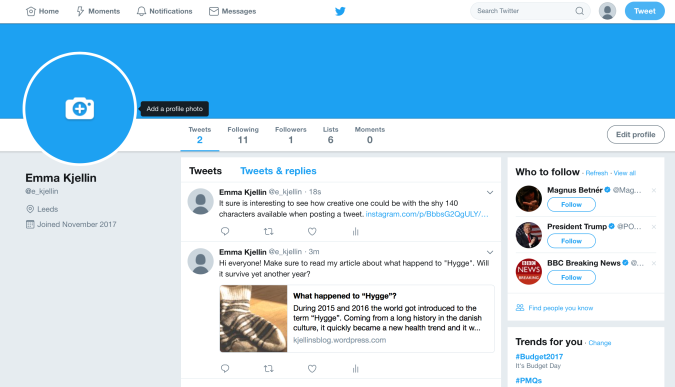
Having an organized timeline on Twitter and following several people that might be potential followers to you, is not enough. Of course you also need to post your own qualitative content that will engage your audience. Here is my very first posts and there is more to come.
I think this was a very informative and effective workshop. I am amazed of how many tools there are out there that will help you do the “dirty work” when managing your social media platforms. Crowdfire for instance, that gives you suggestions of other posts and articles to share on your account. TweetDeck, that organize your timeline on Twitter, which will save you a great deal of time. I can definitely see myself using these tools in the future.